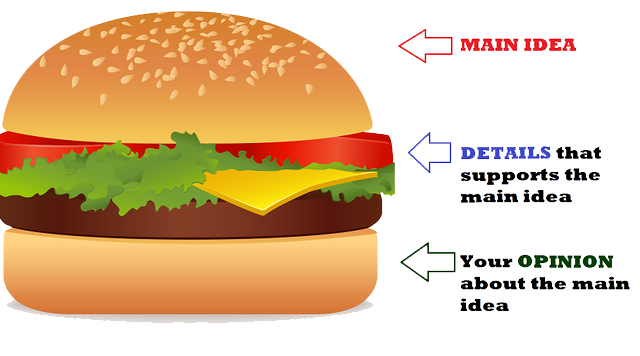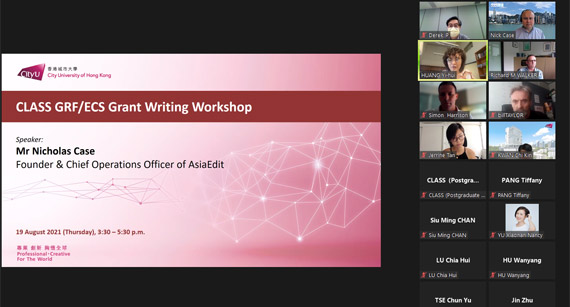




Quick Takeaways:
The English language has a rich history of borrowing words from other languages, especially from Latin. Latin abbreviations such as ‘a.m.’, ‘p.m.’ and ‘CV’ have become part of our everyday vocabulary. Such abbreviations are also frequently used in academic writing, from the ‘Ph.D.’ in the affiliation section to the ‘i.e.’, ‘e.g.’, ‘et al.’, and ‘QED’ in the rest of the paper.
This guide explains when and how to correctly use ‘et al.’ in a research paper.
Paragraphs are fundamental components of journal paper. A paper is made up of a number of paragraphs of varying length.
A paragraph is a unit of writing that contains a series of sentences, related to one central idea, which helps to organise a paper. Paragraph structure is a mini version of the whole paper; containing an introduction, a body and a conclusion.
You can think of your paragraph as being structured like a burger.

The first sentence introduces the key idea or concept. This signals to the reader what the paragraph is about and the opening sentence often links back to the preceding paragraph.
Let’s look at this example paragraph:
Unfortunately, significant problems and limitations exist in the current treatment of children with ADHD. Treatment with stimulants produces side effects, such as sleep problems and loss of appetite, and thus is not ideal or recommended for very young children (Corcoran, 2011; Faraone, Biederman, Morley, & Spencer, 2008). Although pharmacotherapy and behavioural management generally improve parent and teacher reports of children’s social skills, once treatments stop, so too do children’s improvements (MTA Cooperative Group, 2004). Moreover, when parents are stressed or dealing with their own mental health issues, they may not be able to properly implement the skills learned in behaviour training, resulting in more frustration and negative reinforcement of the parent–child conflict (Bögels, Hellemans, van Deursen, Römer, & van der Meulen, 2014). Therefore, it is imperative to investigate other psychosocial interventions that can improve the well-being of the entire family system.
The highlighted topic sentence above in our example paragraph links back to the information in the previous paragraph (not shown here), which outlined treatments for attention deficit hyperactivity disorder (ADHD). It also introduces the main idea to be discussed in this paragraph: the limitations of those treatments.
Tips for writing your topic sentence:
Subsequent sentences, or the “burger filling”, develop the idea and provide further detail that elaborates, explains, justifies or analyses the argument.
Referring to the same example,
Unfortunately, significant problems and limitations exist in the current treatment of children with ADHD. Treatment with stimulants produces side effects, such as sleep problems and loss of appetite, and thus is not ideal or recommended for very young children (Corcoran, 2011; Faraone, Biederman, Morley, & Spencer, 2008). Although pharmacotherapy and behavioural management generally improve parent and teacher reports of children’s social skills, once treatments stop, so too do children’s improvements (MTA Cooperative Group, 2004). Moreover, when parents are stressed or dealing with their own mental health issues, they may not be able to properly implement the skills learned in behaviour training, resulting in more frustration and negative reinforcement of the parent–child conflict (Bögels, Hellemans, van Deursen, Römer, & van der Meulen, 2014). Therefore, it is imperative to investigate other psychosocial interventions that can improve the well-being of the entire family system.
In this example, the highlighted subsequent sentences back up the claim made in the first sentence with evidence from the literature. Each sentence briefly summarises why previously mentioned treatments are unsuitable. It helps build a strong argument.
Tips for your ”burger filling”:
The final sentence, or bottom of the bun, summarises the information, and may provide a link to the following paragraph.
Look at the example again:
Unfortunately, significant problems and limitations exist in the current treatment of children with ADHD. Treatment with stimulants produces side effects, such as sleep problems and loss of appetite, and thus is not ideal or recommended for very young children (Corcoran, 2011; Faraone, Biederman, Morley, & Spencer, 2008). Although pharmacotherapy and behavioural management generally improve parent and teacher reports of children’s social skills, once treatments stop, so too do children’s improvements (MTA Cooperative Group, 2004). Moreover, when parents are stressed or dealing with their own mental health issues, they may not be able to properly implement the skills learned in behaviour training, resulting in more frustration and negative reinforcement of the parent–child conflict (Bögels, Hellemans, van Deursen, Römer, & van der Meulen, 2014). Therefore, it is imperative to investigate other psychosocial interventions that can improve the well-being of the entire family system.
This sentence sets the scene to introduce the current study in the next paragraph.
Last but not least, here are some general tips on paragraph writing :
1. Vary the length of sentences.
2. Avoid sentences over 35 words.
3. Feature one or two ideas, at most, in any one sentence.
Hopefully you should now have a more concrete idea about how to structure paragraphs. Good luck!
Watch the other infobites in the series.
Wondering why some abbreviations such as ‘et al.’ and ‘e.g.’ use periods, whereas others such as CV and AD don’t? Periods are typically used if the abbreviations include lowercase or mixed-case letters. They’re usually not used with abbreviations containing only uppercase letters.
Our latest online workshop built on the success of face-to-face workshops we developed specifically for local universities. Over 30 faculty members joined the session, presented by our Chief Operating Officer, Mr Nick Case, to learn from our case studies on editing research proposals.
The response to our workshop, which included a constructive and insightful Q&A session, was very positive.Drawing on our extensive experience working with hundreds of Hong Kong researchers targeting the GRF and ECS every year, we used examples of poor and subsequently improved proposals to show the attendees how they can make their applications stand out. The response to our workshop, which included a constructive and insightful Q&A session, was very positive.Drawing on our extensive experience working with hundreds of Hong Kong researchers targeting the GRF and ECS every year, we used examples of poor and subsequently improved proposals to show the attendees how they can make their applications stand out. The response to our workshop, which included a constructive and insightful Q&A session, was very positive.Drawing on our extensive experience working with hundreds of Hong Kong researchers targeting the GRF and ECS every year, we used examples of poor and subsequently improved proposals to show the attendees how they can make their applications stand out.

Wondering why some abbreviations such as ‘et al.’ and ‘e.g.’ use periods, whereas others such as CV and AD don’t? Periods are typically used if the abbreviations include lowercase or mixed-case letters. They’re usually not used with abbreviations containing only uppercase letters.
Check out AsiaEdit’s professional research grant proposal editing service.
Read more about our training services covering all aspects of academic writing tailored for local institutions.
More resources on research grant proposal writing: On-demand Webinars
Preparing an effective research proposal – Your guide to successful funding application
Preparing an effective research proposal – Your guide to successful funding application (Part 2)

Rachel first joined us as a freelance editor in 2001, while completing her PhD. After spending a few years as a post-doctoral researcher and then lecturing in psychology, she returned to us in 2010 and focused her career on academic editing. She took on the role of Assistant Chief Editor in 2018, and became co-Chief-Editor in 2020. Unable to leave academia behind completely, she also teaches Psychology at an English-speaking university in Italy, where she is now based. With extensive experience in both academia and publishing, Rachel has an excellent overview of both the client and editor sides of the business.



Your Schedule, Our Prime Concern AsiaEdit takes a personalised approach to editing.
We are East Asia's leading academic editing partner. Established in 1996 and headquartered in Hong Kong, we have strong connections with academics and renowned faculty in the region, built by delivering quality work on schedule for more than 25 years.
Suite 2101, 99 Hennessy Road,
Wan Chai, Hong Kong
9:00am – 6:00pm
(+852) 2590 6588
